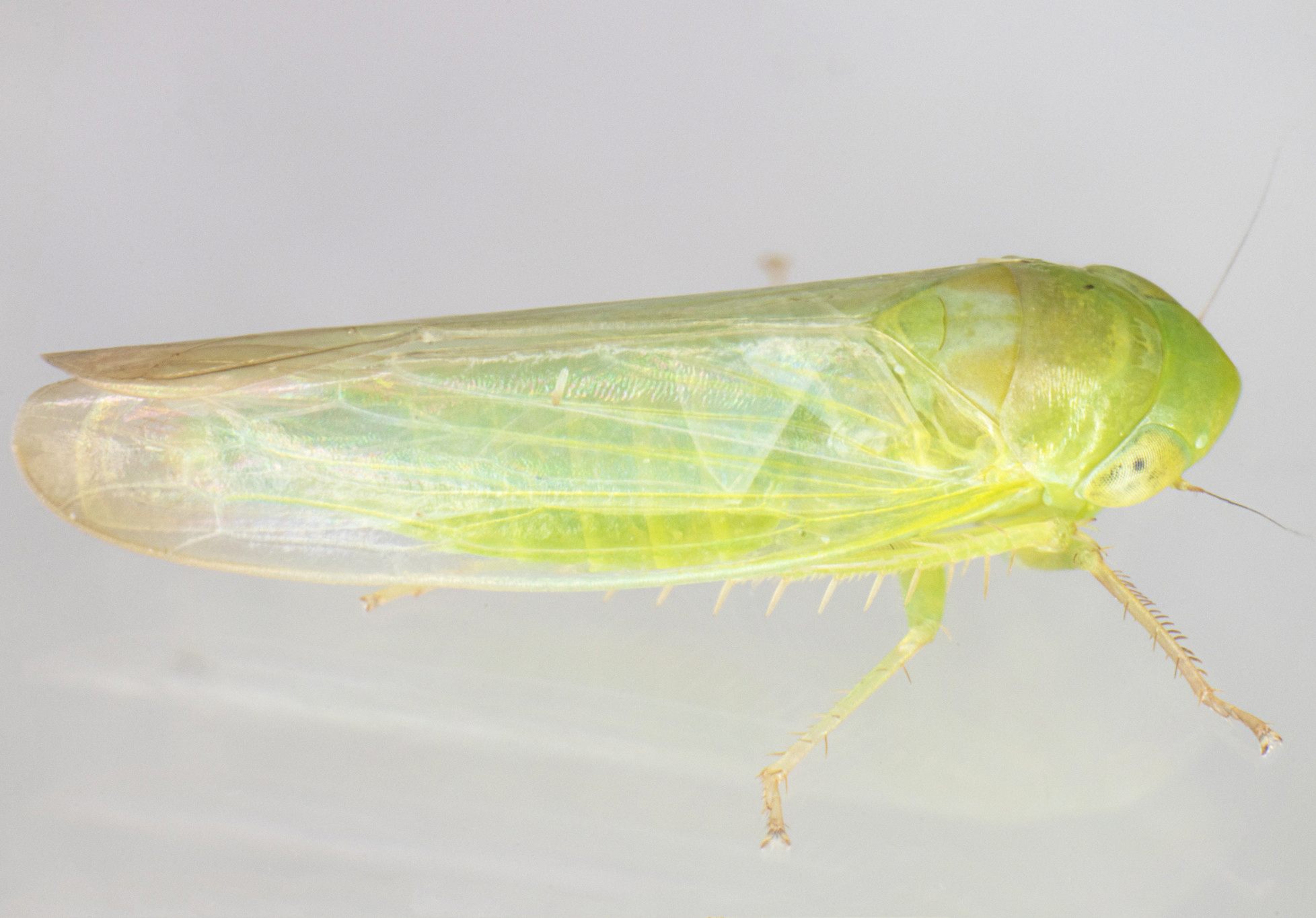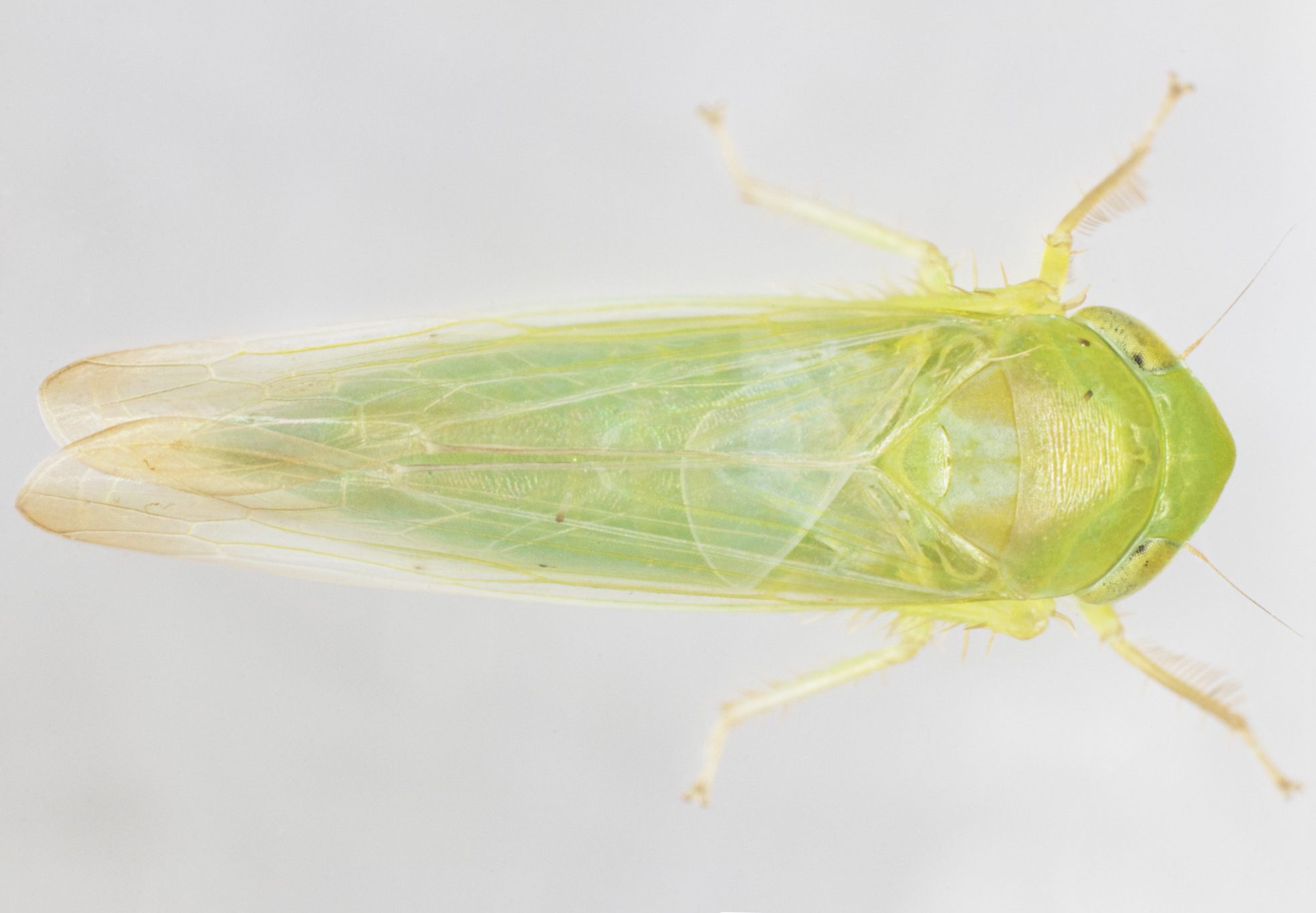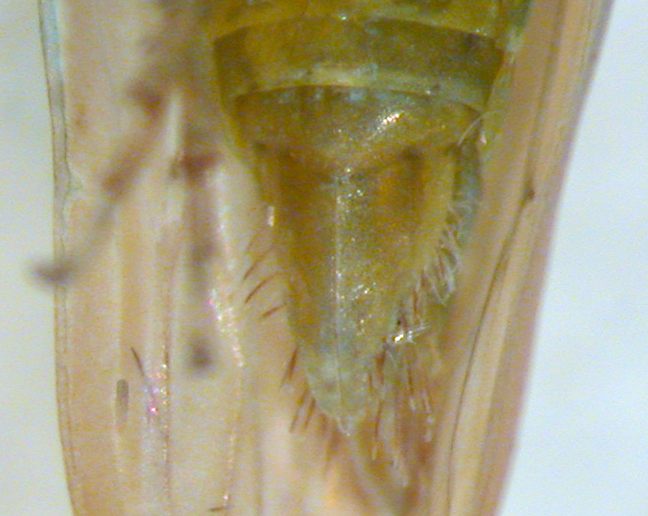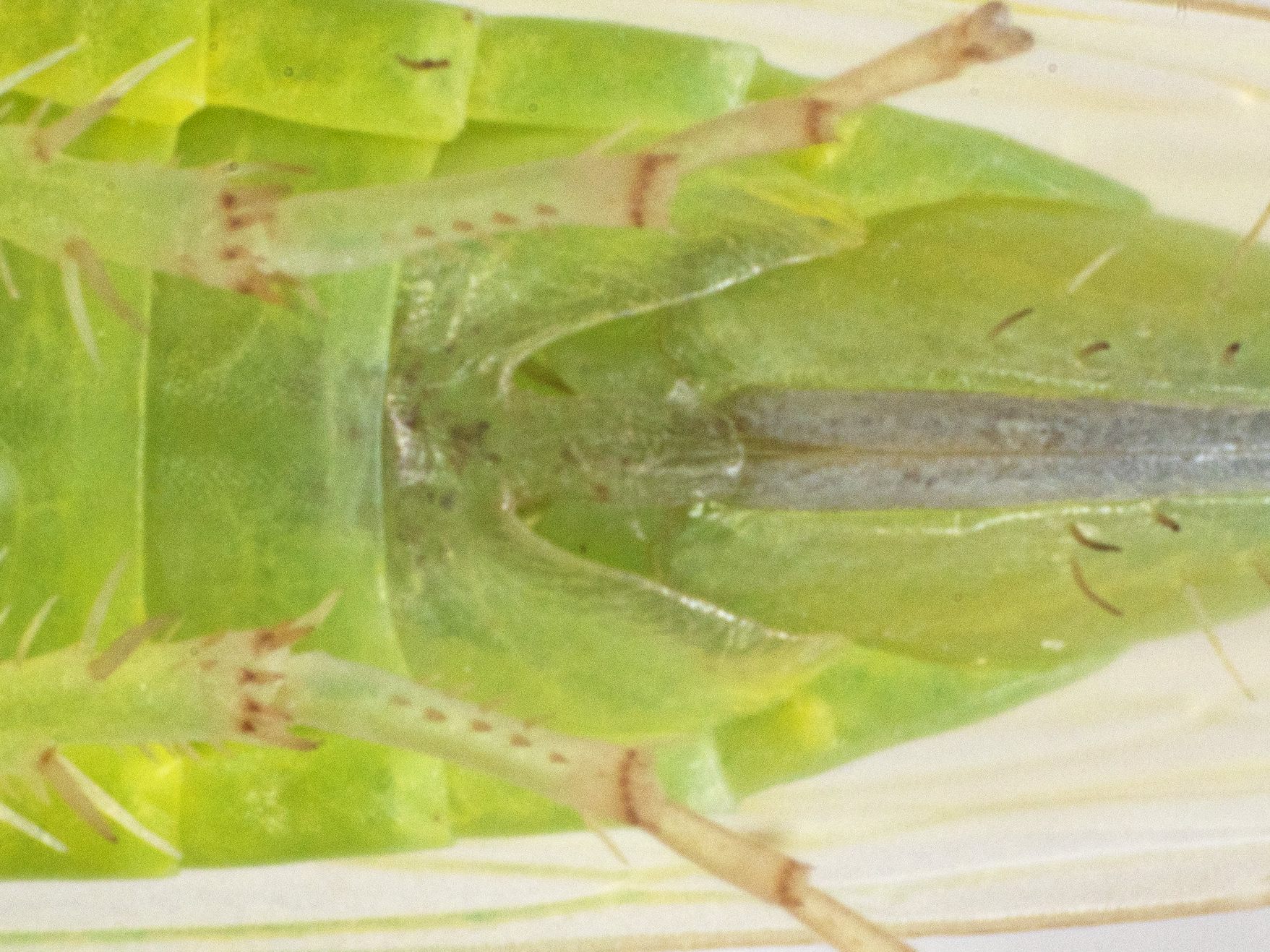| Family (Alpha): | |||
« |
 » » |
| Cicadellidae Members: | NC Records | |||||
|---|---|---|---|---|---|---|
Chlorotettix spatulatus - No Common Name | ||||||
 © Solomon Hendrix |  © Solomon Hendrix- note pointed head |  © Bo Sullivan- male, note subgenital plates |  © Solomon Hendrix- note pregenital sternite shape |
|
Hoppers of North Carolina: Spittlebugs, Leafhoppers, Treehoppers, and Planthoppers |
| Family (Alpha): | |||
« |
 » » |
| Cicadellidae Members: | NC Records | |||||
|---|---|---|---|---|---|---|
Chlorotettix spatulatus - No Common Name | ||||||
 © Solomon Hendrix |  © Solomon Hendrix- note pointed head |  © Bo Sullivan- male, note subgenital plates |  © Solomon Hendrix- note pregenital sternite shape |